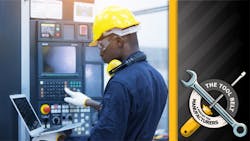Podcast: The changing role of control system integrators in the automation industry
The Control System Integrators Association (CSIA) is a global trade association with over 500 member companies in 35 countries that seeks to advance the industry of control system integration. Control system integrators use their engineering, technical and business skills to help manufacturers and others automate their industrial equipment and systems. For this year's System Integrator Roundtable episode, Plant Services editor in chief Thomas Wilk spoke with three veteran system integrator professionals about how the industry is changing and which new technologies are poised to make a big impact. Kurt Wakeman is the business director for Materials Handling group at E Tech Group. Bob Pusateri is director of business development at Electronic Drives and Controls. Sam Hoff is President and CEO of Patti Engineering.
PS: To set up our conversations for our listeners, we all know that operations in industry have been faced with a couple of huge integration challenges this year and the last couple of years with increased automation, dynamic work scheduling requests and line changes, and also simply (for the asset manager specialists out there) remote monitoring technologies. So, we’ve got a couple of questions we're going to talk to the roundtable about. They're all going to chime in, but I'm going to ask Kurt if he can answer first on this first question and it's a pretty high-level question.
Kurt, in 2022, what kinds of integration work dominated your schedule? Are we looking at IT-OT system integration, specific warehouse inventory automation and things like that? What did you and the E Tech Group get up to?
So automation, it's been around for a long time and offers many benefits, including increased throughput and improved quality. But most recently with COVID and the work from home and people with expectations on what they get from a job, we're seeing a lot of labor shortages across the industry. People have higher expectations for what they're doing. They don't want repetitive tasks, and automation can come in and solve that problem. A good example I have is a friend of mine from high school, he got a job at a warehouse and his job was to take a box off one shelf and put it on the conveyor, and after working there for about four hours, he went to his boss, put in his resignation, and quit.
Today we're seeing that machines can replace that repetitive task, and not only replace that task but create a need for jobs that are at a higher skill, and that's going to benefit not only the worker but productivity as well. That's what I'm seeing from last year, and the trends this year are shifting a little bit more, and I can get into that with the next question.
PS: I’ll go to Bob then. Bob, what kind of work did you and your team mostly do in 2022? What was on your calendar?
BP: We specialize in line retrofit, so we breathe new life into an old system. We do a lot of work in the metals industry for converting of slitting lines of slitting steel copper alloys, that kind of thing; lots of work in wire and cable, whether it's electrical wire or wire rope; and also coating and laminating.
There's lots of lines out there that will have 10 to 20 motors and drives on them. Some of them have very old systems, DC drives that need to be converted to AC, or it could be just an older generation of an existing AC drive, right? Maybe you have an old Rockwell 1336 and you want to convert that to a Powerflex 755, something like that. That really dominates a lot of our work, and those industries I mentioned make up most of our industries that we tend to interface with. But you know, we could do just about any type of PLC and drive retrofit in almost any industry.
PS: I'm curious, Bob, do you see some of that work as being related to the reshoring initiatives that are in the air as people bring business either back into the country or want to refocus in North America? And so there's a lot more brownfield opportunities or change-over opportunities?
PS: We'll move to Sam, and thinking again in 2022, when we were still managing the COVID pandemic (I know we’re still managing a lot of it, but we're still coming out of the crisis part of it), what sort of integration work was dominating your schedule last year?
SH: So it has really been important, we're going up on three years of COVID now, right, March of 2020. So it's been over three years, people don't realize that and it's all about helping our clients do more with less. The workforce issue is really a big issue. Lots of maintenance and key people are retiring, key people that keep systems operating. And what can you do to help clients improve their OEE, improve their first-time capability, and help them produce more with less people.
Sometimes it's adding a robot here and a robot there. But a lot of times we're going in and it's getting the data out of the systems and doing analytics on the data and seeing what's going to give you the most bang for your buck. So we are working with a lot of our end user clients mapping out what their future looks like and how they can produce more with less.
Read the rest of the transcript
About the Author

Thomas Wilk
editor in chief
Thomas Wilk joined Plant Services as editor in chief in 2014. Previously, Wilk was content strategist / mobile media manager at Panduit. Prior to Panduit, Tom was lead editor for Battelle Memorial Institute's Environmental Restoration team, and taught business and technical writing at Ohio State University for eight years. Tom holds a BA from the University of Illinois and an MA from Ohio State University



